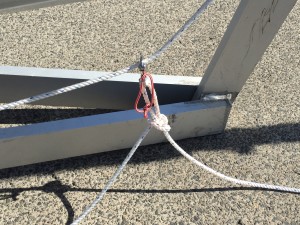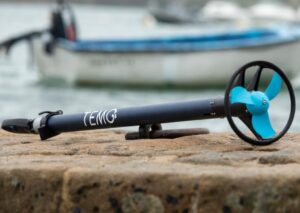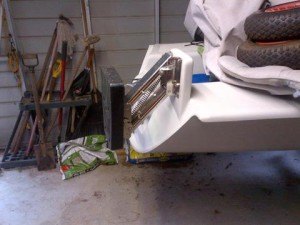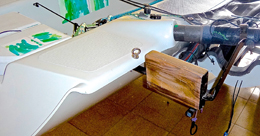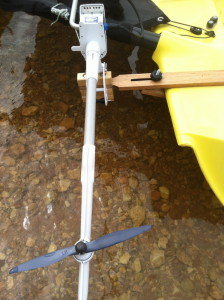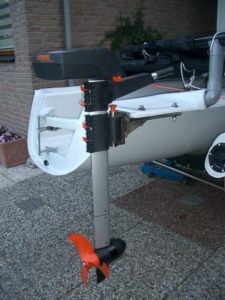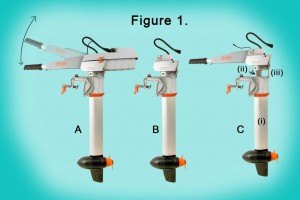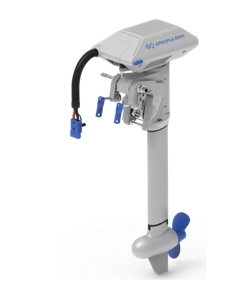Forum Replies Created
-
AuthorReplies
-
10 October 2024 at 12:31 am in reply to: Raising the mast made easy – no hinged mast step required #19205::
Unfortunately the hinged mast base is out of production due to problems with quality.
You could try anchoring or tying up to the dock and then lowering the sails and drop the mast using an extra long forestay lashing fed back to the cockpit, and lowering the sails. Then reverse the process the other side of the bridge.
These links may help
Tow Loop, Anchor and Drogue for dropping mainsail on the water
Hope this helps
Paul
::Hi Nick
There are 4 potential launch sites depending on the state of the tide and where you plan to sail. Listed in order of distance from Mona Vale.
- Bayview Beach Boat Ramp
https://maps.app.goo.gl/Xgog8QSJqYeEQWtF6
Situated near the Tennis Courts, this concrete ramp on to the sand has excellent parking including parking reserved for cars with trailers. There’s also a BBQ and water available and toilets in the Rowland Reserve car park to the South. The beach is a mixture of firm and soft sand and slopes fairly gently before you get into deeper water. The only downside is when the tide is out it’s quite a long drag to get back to the ramp. - Bayview Yacht Racing Association
https://maps.app.goo.gl/j3VZfU4arhDP25qG8
The club house is only open at weekends and has toilets and showers but there is parking right next to the beach and it’s very convenient to launch from.
The tide does go out quite a long way and it is muddy if you have to pull your boat through it. - Long Beach via Delecta Ave
https://maps.app.goo.gl/kgTeS5iwFG4e4CoAA
This is further along towards Avalon and we have used it when racing in the Avalon SC Australia Day Regatta. There’s a sand ramp leading onto the beach from Delecta Ave but the beach is quite small when the tide is in – on the plus side it deepens fairly quickly. You’re unlikely to be able to park nearby but there are Toilets and facilities at the Clareville Beach Reserve, which also has a car park with 12h spaces which fill up quickly on weekends – you may have to park further along the Hudson Parade. - Sand Point Boat Ramp
https://maps.app.goo.gl/ePmsGamLPv2BZtbB8
This is used by Palm Beach Sailing Club (catamarans) which operates out of a nearby shed at the South end of Iluka Rd (no facilities).
There is parking in Iluka Road car park which has toilets but that can get busy at weekends. There’s a cafe (Coast 7am-2pm) nearby on Barrnejoey Road. The ramp is a bit narrow and mainly used by fishermen. Better to launch from the beach South of the ramp.
There is a grassy area above the beach (West of the ramp) for rigging up but the sand bank to get down is quite steep.
Hope this helps
Paul-
This reply was modified 8 months ago by
Paul White.
-
This reply was modified 8 months ago by
Paul White.
-
This reply was modified 8 months ago by
Paul White.
::The TEMO comes with the Rowlock fitting which contains screws and bolts for attachment.
https://www.temofrance.com/en_GB/shop/t450-temo-450-104
Rowlock
https://www.temofrance.com/en_GB/shop/sem-1500-rowlock-fitting-9On a Weta I’d recommend using the bolts and installing a curved metal plate under the gunwale to reinforce it.
I have tried to contact Oliver via the French Weta Class forum without success – there’s a thread here.
https://forum.wetaclassefrance.com/viewtopic.php?t=883
::O rings are available on eBay etc.
Tip: Wrap some plumbers PTFE tape around the thread of the hatch for a watertight seal.
The man at the factory who made covers died during Covid and they haven’t found a replacement.
I have found a 5m speedboat cover works well. I don’t know your location so I can’t recommend a supplier.
East Coast Sailboats have the widest range of spares in the USA.
Paul
Weta Sydney-
This reply was modified 1 year, 5 months ago by
Paul White.
-
This reply was modified 1 year, 5 months ago by
Paul White.
-
This reply was modified 1 year, 5 months ago by
Paul White.
::I’m not aware of anyone hitching it to the car but I have seen a rotating front wheel added between the v of the trolley frame which would allow you to haul it or winch it up.
An alternative (if you have something to tie a pulley to) is to run a rope from the trolley up the slope to the pulley and around it. Then use your weight to pull the boat up.
Hope this helps
Paul
1 October 2022 at 11:01 pm in reply to: Tow Loop, Anchor and Drogue for dropping mainsail on the water #19038::Using a Drogue or Anchor with the Tow Loop
In a recent regatta, the wind increased from 5-15 knots over a series of starts and I wanted to adjust the battens but there was no beach nearby to go to and the water was too deep for my tiny nylon Copper Anchor.However, a recent incident when I had to deploy mooring lines and fenders in wind gusts of 34 knots made me think there must be a better solution – as I was still moving quite fast even when hove-too.
So hence my purchase of a 500mm drogue (or sea anchor) from eBay.
Drogue/Anchor Deployment
Obviously if using an anchor the line from the tow loop to the anchor will need to be much longer than for the drogue but the principal is the same:
- Tie the anchor or drogue line to a shackle or high strength carabiner using a bowline.
- Attach a 4m retrieval line to the shackle and tie the other end around the forward ama arm.
- Then attach the shackle/carabineer to the tow loop and unclip the shock cord retainer from the deck to deploy the tow loop.
- Deploy the anchor/drogue and allow the shackle/carabineer to reach the centre of the tow loop in front of the bow so the boat is head to wind.
- To retrieve the anchor/drogue. Pull the retrieval line to allow you to reach the shackle/carabiner and then retrieve the anchor/drogue.
- Reattach the shockcord to pull the tow loop under the bow and onto the deck.
::TEMO-40 Electric Paddle
Winner of the 2021 DAME award, the TEMO-450 electric scull is waterproof (IP67), telescopic (130 to 170 cm) propulsion unit that weighs only 500 kg and attaches to the gunwale with a rowlock accessory. It has a 400-watt motor with 200 watts output and battery life is 42 mins on full power or 80+ mins on 1/2 power. Sold with a cover for easy transport.Video: Oliver Bricout
The Temo attaches to the Weta with a swivelling Oarlock (supplied) which bolts to the gunwale.
It’s too long to fit inside the hatch but it comes with a waterproof case and, according to Oliver, it’s easy to store in the cockpit inside the case while sailing.
Available in Europe, the USA and Australia. More information at https://www.temofrance.com/
-
This reply was modified 2 years, 8 months ago by
Paul White.
-
This reply was modified 2 years, 8 months ago by
Paul White.
-
This reply was modified 2 years, 2 months ago by
Paul White.
::Brackets
These are options I have seen for brackets:
1. Using a bar (wood or metal) across the stern clamped from gunwale to gunwale with the outboard mounted on a block at the side.2. Stern Bracket
Using a metal bracket mounted on the stern which has been reinforced from the inside using a plate inserted by adding an inspection port on the cockpit side.
3. Hinged Bracket
Using a hinged bracket attached to a piece of wood inserted into a slot in the stern and then glassed in place – also requiring an inspection port on the cockpit side. Presumably also requiring an inspection port on the cockpit wall to give access inside the hull. The hinge allows the bracket to raise the outboard clear of the water.4. Bolt on bracket
Designed by José Carlos Sánchez for his solo cruising adaption.
I designed this one because it only needs to drill one hole on the Weta´s fiberglass. It can be installed in less than a minute, does not interfere with sailing and does not load the boat too far back. Wood is not a single block, it covers an internal steel frame.
It is worth considering to install an electric outboard if your local conditions allow it. It will reduce pollution and you will not suffer noise and gasoline smell.
Summary
All methods will work although the a bar is easier to fit/remove, can be stowed out of the way when sailing and doesn’t require any holes in the cockpit side. It also means that the outboard is out of the way in most sailing positions if the outboard is not removed while sailing.
-
This reply was modified 2 years, 8 months ago by
Paul White.
-
This reply was modified 2 years, 8 months ago by
Paul White.
::Outboards
Probably the most important aspect of using an outboard on a Weta is the weight of the engine and where it can be distributed to have least impact on your sailing experience. Having extra weight on the stern is slow in light winds but of course you can counter that with your body weight.Then there’s the issue of stowing the engine when it’s not in use. The below deck storage compartment has benefits in that the weight of the outboard is then in the centre of the boat and near the water line. However the compartment below deck is not very deep so careful measurement of the engine and compartment is recommended before purchase, if you plan to stow it below.
The standard 6″ hatch is too small for any outboard but Kayak hatches offer various shapes and sizes which can be latched shut securely. The hatch in front of the daggerboard must seal closed because the storage compartment below deck provides buoyancy in a capsize – the boat may not be righted if this is compromised.
If you are storing a petrol outboard below deck you may need to carry an additional fire extinguisher above deck, depending on your local marine regulations.
Lying the outboard in the cockpit is an option but it may get in the way when tacking and is liable to catch on ropes.
Engine options include:
1. Electric paddle

The electric paddle is different from a trolling motor in that it’s designed for propelling small boats rather than just moving quietly after fish. It has a brushless electric motor which outputs 30Wats of power, but unlike a trolling motor, it uses a “model aeroplane” type propeller which is much more efficient for continuous propulsion.
One Weta owner reports: “The EP can move the Weta on calm waters with little to no wind in the 2.8 to 3.0 knot range if you have the main and jib up. Bare pole only the speed drops a couple tenths. The apparent wind created by the propulsion of the EP helps generate the additional speed. Throttling back to the mid-range setting drops the speed by .3 kts so not much of penalty, considering the gain in range. I have yet to run the NIMH battery down to empty and would guess that the furthest I have run on a charge if 4 to 5 miles.”
The manufacturer claims the range is as follows
- Almost 2 hours at High speed
(about 2.5-3.5 mph on many small boats) - Up to 4 hours at Medium speed
- Up to 5 hours at Low speed
Weight:
The motor and battery together weigh less than 16 lbs.- Motor weighs 7.6 lbs.
- NiMH Battery pack weighs 8.1 lb.
- Smart Charger weighs 1.28 lbs.
Size:
- Motor envelope sizes
Short shaft: 7” dia. x 38.5” long
Long shaft: 7” dia. x 43.5” long
Mini shaft: 7” dia. X 33.5” long - Waterproof battery comes in a floating bag 9” x 7” x 6”.
- Smart Charger fits into a 6” x 8” ditty bag.
Minimum battery range:
- At High Setting, the battery will last almost 2 hours.
- At Medium Setting, the battery will last about 4 hours.
- At Low Setting (midway between off and Medium setting) the battery will last 5 hours.
- Recharge time: about 3 hours.
Speed control:
Continuously variable but is marked as follows for reference.- High Setting = 100% output
- Medium Setting = 50% output
- Midway below Medium and Off (not marked) = 33% output
2. Electric outboard motor
There’s a useful buyers guide to Electric outboard motors over 5Kw here and under 5Kw hereSold as a trolling motor for Kayaks ( The 1103 a new more powerful version is now available), the advantage for the Weta is that the drive is separate from the battery and connected by cables. This means you can separate the weight of the battery from the engine which is much better for weight distribution and stowing. Weta owner, Glenn Madere installed the mount following the manufacturer’s diagram for an off-center installation (see p. 47 of the Manual) as if his main hull were a kayak, adjusting the vertical “shaft” as far down as it will go. Between this adjustment and keeping crew weight aft and on the motor side, the prop has enough depth to perform well in up to, say, a foot of chop. The battery is said to be good for 1hr of use.
503 $1699/ 1003 $1999
Revised for 2015 the Torqueedo Travel is sold as a replacement for 1.5 HP (503) and 3HP (1003) Engines but this is a misleading comparison, as a 3hp petrol motor will get many small, lightly loaded craft of the right hull form “on the plane”, and a Torqeedo 1003 won’t. The propeller supplied is not even designed for that sort of speed (it’s rated 9kmph at 790W, or about 6 knots flat out). Where the Torqeedo excels is pushing surprisingly heavy loads (when the 3hp petrol wouldn’t get you on the plane anyway) at up-to-displacement speeds. 4 or 5 knots in a typical 9ft inflatable dinghy, for example.
The acceleration up to those speeds is also impressive, as electric motors (unlike petrol ones) generate full torque from very low revs – there is never a “lag” after twisting the throttle. So the Torqeedo 1003 has lots of low to mid-range push, but not the whizzy top end of a petrol. Unlike “trolling motors” it will be genuinely useful as a main propulsion unit – just not for anything much over 6 knots (12kmph).
- On-board computer with GPS-based calculation of remaining range
- Removable battery and tiller
- Solar rechargeable – including during the voyage
- Stepless forward/reverse drive
- Completely waterproof (IP 67)
- Integrated battery with 320 Wh Li-Ion
- Max speed 9-10 km/h (depending on type of boat, wind and waves)
- Charging time: 7 hrs
- Remote throttle available
Speed in knots (km/h) Range in sm (km) Running time in hours Slow 2.0 (3.7) 12.8 (23.7) 06:20 Half throttle 3.0 (5.5) 6.4 (11.9) 02:08 Full throttle 4.0 (7.4) 2.8 (5.2) 00:42 Torqueedo Travel Model Comparison 503 1003 Input power in watts: 500 1,000 Propulsive power in watts: 220 480 Maximum overall efficiency in %: 44 48 Static thrust in kg / lbs*: 40 68 Integrated Li-Ion battery in Wh: 320 530 Nominal voltage in V: 29.6 29.6 Final charging voltage in V: 33.6 33.6 Total weight in kg / lbs: 12.9kg / 28.4lbs 13.4kg / 24.6lbs Motor weight without battery in kg / lbs: 8.9kg / 19.6lbs 8.9kg / 19.6lbs Weight of integrated battery in kg / lbs: 4.0kg / 8.8lbs 4.5kg / 9.9lbs Shaft Length: 62.5cm / 24.6in 62.5cm/ 24.6in Standard propeller (v = speed in km/h at p = power in watts): v9/p790 v9/p791 Maximum propeller speed in rpm: 700 1,200 Stepless forward/reverse drive: Yes Yes Integrated on-board computer with display: Yes Yes ePropulsion Spirit 1.0
$1930 approx (HQ in Hong Kong, Distributors worldwide)
New Spirit 1.0 Evo is a portable 3HP electric outboard made for dinghies, fishing boats, and sailboats. It features a 1276Wh large integrated lithium battery for long range. The hydrogeneration function recharges the battery while sailing.ePropulsion Spirit 1.0 Evo web page
- kW: 1.0 • Voltage: 40.7 (nominal) • HP: 3
- Battery: Integrated • 1.02 kWh • LiPo (lithium-ion-polymer)
- Running Time: 1 hrs – 4 hrs
- Shaft Length (cm): (XS): 52.5 • (S): 62.5 • (L): 75
- Weight (kg): Motor: 11 • Battery: 8.8 (varies with shaft length and/or tiller)
- Steering: Tiller or Remote, Wireless
- Other: Hyrdrogeneration. Two year limited warranty. As of May 2019 wireless remote control is available
- Country of Manufacture: China
- Price: €1800 – €2136 • $2150 – $2400
ePropulsion Navy 3.0 Evo web page
- kW: 3.0 • Voltage: 46.8 (nominal) • HP: 6
- Battery: Non-Integrated • 3.04 kWh • Li-ion
- Running Time: 1 hrs – 4 hrs
- Shaft Length (cm): (S): 64 • (L): 76.5
- Weight (kg): Motor: 24 • Battery: 31.5 (varies with shaft length and/or tiller)
- Steering: Tiller or Remote, Wireless
- Other: Hydrogeneration. Two year limited warranty, one year on battery. Wide variety of accessories available.
- Country of Manufacture: China
- Price: €2500-€2600 • $2900 – $3050
3. Petrol (4-stroke) motor
$500 approx
The Thai-made Super Chibi uses a reliable 1HP Honda Engine (designed for garden tools) mated to a short drive-shaft and neat integrated petrol tank.
I have seen one used on a Laser (!) which had to sail to yacht racing regulations
Engine Honda GX 25 Maximum Power 1.0 HP. @ 7,000 RPM. Dimensions L660mm x W210mm Cooling System Air Driving system Direct Shaft system ,no Clutch Gear ratio 1:2 Displacement Tonnage ~ 200 Kg. Propellor 3 Blade made from Nylon -66 Resin Fuel tank Capacity 600 cc. Weight 5.5 Kg. (Not including installation set) Consumption Rate ~ 400 CC./Hr. Performance Maximum speed 10 Kmh /5.3 knots
(depending on load, wind, waves)Operation ~ 90 Min 4. Propane Outboard
Price $1000 appprox
The US-made Lehr runs on propane and the cannisters can add to the overall weight.Engine Type Propane-Powered 4 Stroke OHV Horsepower Rating 2.5 hp (1.8 kW) Displacement 4.39 cu in / 72 cc Bore X Stroke 2.12″ x 1.37″ / 54mm x 31.5mm Cylinders 1 Full Throttle RPM Range 4500-5500 RPM Ignition System CDI Ignition Starting System Manual Fuel Propane (110 Octane) Carburetion No Choke / No Priming Lubrication Wet Sump Control System Tiller Handle Trim Positions 5 Gear Shift F-N Gear Ratio 2.08 Shaft Length 15″ Standard Prop 7.25″ x 6″ 3 Blade Aluminium Weight 37.4 lbs / 16.96 kg Fuel Tank Type On Board Twist ‘n Go 16.4 oz Propane Canister Remote (Optional) 11 & 17 lb Composite Tanks Recommended Oil 4 Stroke 10W-30 Engine Oil Capacity 0.37 US qt (0.35L) Warranty 3 Year Limited Warranty C.A.R.B. Rating 3 Star Ultra Low Range 16.4 oz Camping Bottle – @3000RPM – 2.5 hrs, @5000RPM – 1 hr 5. Weed-wacker conversion
Some people realised you could get a crude but effective “outboard” by putting a propeller on the end of a string trimmer (aka “weed-whip”, “whipper-snipper”, “weed-whacker”, “weed eater”, “strimmer”).
There’s now a few conversion kits available that come as a complete unit or you can DIY with a donor unit
Small Outboard Motor – 1.2 HP
Cost: $250 with a 2-Cycle Motor and $325 with a 4-Cycle Motor
Conversion Kit – for those who want to do-it-yourself: $100.The Kit does not include the weedeater, which can be purchased from your local hardware store. Fabricated from a Straight Shaft – attachment capable (Split Shaft) Weed Eater. Both 2 cycle and 4 cycle units are available.
Performance: Weight 13.2 lbs
Speed: Tested with a two person Kayak, West Marine’s Water Tender 9.4, Walker Bay, and a Sevylor Fish Hunter. They all ran between 4.0 to 5.5 Knots loaded with one 165 lbs person, swinger ice chest with 6 pack, fishing pole, tackle box, and oars6. Hand Cranked Outboard.
Originally developed in the 60s, they are now being produced in China and offer a low-tech, quiet propulsion solution – although perhaps oars or a paddle might give you a more efficient method of propulsion for long periods. It might also make be suitable for conversion to power from an electric drill.
Available in UK (£125.00) Germany (EUR 149), Australia (AU$169) under the Freewheeling brand and the USA ($112) as Bris.
The bracket does look a bit flimsy and there’s no hinge to allow it to kick up if you hit anything.In the video below, it shows how flimsy then turning handle is but also how you can improve it substantially with an electric drill. Another video testing the speed and battery life here.
Conclusion
From the options above, you can see that the petrol outboard has the best power to weight ratio and highest top speed – although there are all the issues of pollution, noise and transporting a flammable liquid.The electric motors may not have the top speed of a petrol or propane motor so they won’t get you planing – but they produce thrust at very low speeds and can output a steady power for reasonably long periods. The electric motors can be disassembled allowing you to stow components below deck and some can separate the battery entirely from the drive unit using cables for better weight distribution.
-
This reply was modified 2 years, 8 months ago by
Paul White.
-
This reply was modified 2 years, 8 months ago by
Paul White.
-
This reply was modified 2 years, 8 months ago by
Paul White.
-
This reply was modified 2 years, 2 months ago by
Paul White.
-
This reply was modified 2 years, 2 months ago by
Paul White.
::Self Tacking Jib Tips
If you’re having issues with scratches on the top of the bow from the original all-steel block which has sharp edges, consider replacing it with the all-plastic RF25109 (standard on new boats) which comes with a Dyneema core lashing.
NOTE Tie the lashing through the middle of the block as shown – otherwise the block may split apart under load.
Alternatively, use a 5mm Ronstan Shock (Sheeveless Block) which is lightweight adonised aluminium, cannot fail under load and has rounded edges that won’t scratch. The Dyneema is slippery enough to allow the line to feed through the Shock without causing wear. 
For best security, instead of tying a stop knot in the lashing for the block which can pull through the hole in the deck, knot the lashing under the bow. 
Check the holes in the deck. If you find the lashing is starting to wear a groove in the deck where it exist the holes, consider adding a Deck Bush, like this range from Allen Bros. Available in colourful adonised aluminium, Acetel or Acetel with a stainless steel insert. 
If you have an older boat without the central track support, you may find it helpful to add a pad eye to the deck in front of the track and attach a pair of blocks so the sheets are fed under the track without snagging. 
-
This reply was modified 2 years, 8 months ago by
Paul White.
-
This reply was modified 2 years, 8 months ago by
Paul White.
::Having decided to transport your Weta on the roof of your vehicle, the next question is how do you get it up there without assistance.
There are side and back slide loading systems which use a winch or electric drill to slide the boat up a track and onto the roof.
This is the BoatHoist Sidewinder electric boat hoist which includes a 12 volt electric winch with remote control.
The Rhino-Rack Side Boat Loader is similar product powered by an electric drill but it uses two winch attachment points providing a more even pull when loading.
There is also the rear mounting system from Mozzi Boat Loaders which uses their own custom trailer/trolley with rear mounted wheels to prevent the boat from grounding at the stern – but it would make the boat nose heavy when moving it on the trolley during launching. It *may* be possible to modify this to use a Weta Trolley with temporary dolly wheels mounted under the stern of the boat during loading/unloading.
-
This reply was modified 3 years ago by
Paul White.
-
This reply was modified 3 years ago by
Paul White.
-
This reply was modified 3 years ago by
Paul White.
-
This reply was modified 3 years ago by
Paul White.
-
This reply was modified 3 years ago by
Paul White.
-
This reply was modified 3 years ago by
Paul White.
-
This reply was modified 3 years ago by
Paul White.
-
This reply was modified 3 years ago by
Paul White.
-
This reply was modified 3 years ago by
Paul White.
::Catalyst Waterproof Phone Case
If you want to avoid drowning your phone and take decent photos, get the Catalyst Waterproof Case.
It has an optical glass lens cover (unlike Lifeproof which now has a plastic lens cover which soon becomes opaque) and it is tested for immersion to 10m so you can fully submerge your device in water or cleaning solution without damaging the surface or getting moisture into any of the ports. Drop-proof to 2m and made of scratch-proof polycarbonate, it allows full functionality of the screen, buttons, and cameras and provides unobstructed access to the charging port. Available from Aquagear from AU$95.99 (or US$89.00 from Amazon) for Apple, Google and Samsung phones & tablets.

-
This reply was modified 3 years, 4 months ago by
Paul White.
-
This reply was modified 3 years, 4 months ago by
Paul White.
-
This reply was modified 3 years, 4 months ago by
Paul White.
-
This reply was modified 3 years, 4 months ago by
Paul White.
-
This reply was modified 3 years, 4 months ago by
Paul White.
::Shallow Steering Mod
A development of this is to remove the rod but keep the “fork” attached to the top of the rudder foil and wrap it in tape to cushion it.This enables you to flip the fork down between the foil and stock and prevent the rudder from going down completely so you can steer in shallow water (NOTE – use gradual steering movements with the rudder half down as otherwise you may put undue stress on the stock)
Once you reach deep water you can flip the fork up out of the way and slide the bungee down the stock to hold the foil in place.
Flip up Line
If you need to be able to quickly flip the foil up – when coming in to a beach or ramp for example – you can attach a line to the top of the foil (where the fork is attached) and keep it attached to the tiller using thin bungee. When you need to raise the rudder, just pull the line to flip the rudder up (you may need to slide the bungee part way up the stock first).
-
This reply was modified 3 years, 8 months ago by
Paul White.
::These are the updated Russian Weta contacts: Pavel Savchenko
Ph: +79119295992 (Whatsapp)
pavel_savchenko@mail.ru - Bayview Beach Boat Ramp
-
AuthorReplies



